Justina Buskaitė in the European Review of Books:
 Lithuania has lost the Eurovision Song Contest thirty times. The first loss, in 1994, was awarded to Ovidijus Vysniauskas’ « Lopšinė mylimai » (Lullaby for my lover). The ballad about a secret love, worthy of a soundtrack to a Kevin Costner romance, received nul points and placed absolute last, disqualifying Lithuania from the next year’s contest and prophesying the three decades to come. (I count disqualification as a second loss rather than a continuation of the first loss. I also count withdrawals as losses.)
Lithuania has lost the Eurovision Song Contest thirty times. The first loss, in 1994, was awarded to Ovidijus Vysniauskas’ « Lopšinė mylimai » (Lullaby for my lover). The ballad about a secret love, worthy of a soundtrack to a Kevin Costner romance, received nul points and placed absolute last, disqualifying Lithuania from the next year’s contest and prophesying the three decades to come. (I count disqualification as a second loss rather than a continuation of the first loss. I also count withdrawals as losses.)
There are different ways we could count. Since 1994, Lithuania has had 24 entries, out of which:
☞ seven failed to qualify for the Eurovision final;
☞ eight placed at the bottom half of all the entries;
☞ three have placed so low that Lithuania was disqualified from competing in the next year’s contest;
☞ three have made it to the top 10!
☞ zero have been close to the podium.
Lithuania withdrew from Eurovision after the trauma of « Lopšinė mylimai » and only returned in 1999, with an entry sung entirely in Samogitian, a Western Lithuanian dialect, which then disqualified Lithuania from competing in 2000. But Lithuania has lost Eurovision not only in standard Lithuanian and Samogitian: we’ve lost in English and French, and with scattered losing lyrics in German, Russian, and American Sign Language.
More here.

 Lithuania has lost the Eurovision Song Contest thirty times. The first loss, in 1994, was awarded to Ovidijus Vysniauskas’ « Lopšinė mylimai » (Lullaby for my lover). The ballad about a secret love, worthy of a soundtrack to a Kevin Costner romance, received nul points and placed absolute last, disqualifying Lithuania from the next year’s contest and prophesying the three decades to come. (I count disqualification as a second loss rather than a continuation of the first loss. I also count withdrawals as losses.)
Lithuania has lost the Eurovision Song Contest thirty times. The first loss, in 1994, was awarded to Ovidijus Vysniauskas’ « Lopšinė mylimai » (Lullaby for my lover). The ballad about a secret love, worthy of a soundtrack to a Kevin Costner romance, received nul points and placed absolute last, disqualifying Lithuania from the next year’s contest and prophesying the three decades to come. (I count disqualification as a second loss rather than a continuation of the first loss. I also count withdrawals as losses.) Since 2000, the world has experienced
Since 2000, the world has experienced 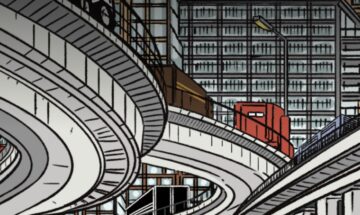 Interstate 35 through Austin, Texas, is the most congested stretch of road in the fastest-growing city in one of the sprawliest states in the country.
Interstate 35 through Austin, Texas, is the most congested stretch of road in the fastest-growing city in one of the sprawliest states in the country. LAHIRI
LAHIRI T
T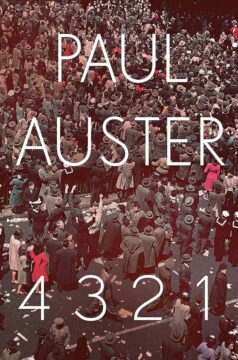 Auster spoke in a rolling purr that was equal parts seduction and lament. His voice sounded like cognac poured over stones instead of ice. In narrating 4321, he covered the whole range of human experience: birth, death, illness, sex, hope, failure, parents, children, revolution, and disillusion, all against the noisy backdrop of the midcentury American colossus. In an eerie parallel, one of the novel’s subplots deals with the student protests at Columbia University in 1968, which have been repeating themselves in a different context this spring. As a result of his constant presence, the topicality of his subject matter, I felt a keen pang of the false intimacy that sometimes strikes when celebrities die. I had listened to Auster speak for nearly the entire month of April. It is dreadful to know that his voice in all senses has been silenced. 4321 explores the life and times of a young man named Archie Ferguson born in 1947 to a Jewish family in Newark. The novel tells four diverging stories of a single individual in parallel chapters. The Archie described in chapters 1.1, 2.1, 3.1, and so on, is born into a stable family with loving parents who occupy traditional gender roles and harbor modest aspirations.
Auster spoke in a rolling purr that was equal parts seduction and lament. His voice sounded like cognac poured over stones instead of ice. In narrating 4321, he covered the whole range of human experience: birth, death, illness, sex, hope, failure, parents, children, revolution, and disillusion, all against the noisy backdrop of the midcentury American colossus. In an eerie parallel, one of the novel’s subplots deals with the student protests at Columbia University in 1968, which have been repeating themselves in a different context this spring. As a result of his constant presence, the topicality of his subject matter, I felt a keen pang of the false intimacy that sometimes strikes when celebrities die. I had listened to Auster speak for nearly the entire month of April. It is dreadful to know that his voice in all senses has been silenced. 4321 explores the life and times of a young man named Archie Ferguson born in 1947 to a Jewish family in Newark. The novel tells four diverging stories of a single individual in parallel chapters. The Archie described in chapters 1.1, 2.1, 3.1, and so on, is born into a stable family with loving parents who occupy traditional gender roles and harbor modest aspirations.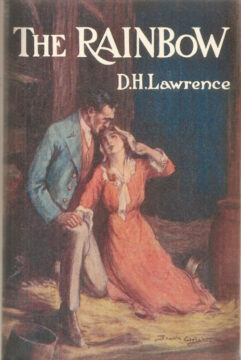 Human spontaneity in Lawrence’s work—and indeed in his life as well—is not the simple, cheerful business that popular culture has often made it out to be. Think of those TV commercials in which an office worker suddenly does something unexpected, like dancing down the corridor of his office, to the comical dismay of his fellow workers. In Lawrence, spontaneity is dangerous and sometimes destructive, but it is necessary to being truly alive. The force of spontaneous love prompted Lawrence to run off with a married woman, Frieda Richthofen Weekley, and Frieda would regret leaving her three children for the rest of her life. Throughout their relationship, Lawrence and Frieda suffered continual eruptions of hostility that left them in pieces, but the marriage endured. It’s not uncommon to read in Lawrence’s biographies sentences like this: “The tension between Frieda and Lawrence abated after she struck him with an earthenware plate…” Lawrence would make creative use of this fight in Women and Love, when Hermione strikes Birkin with a paperweight, “almost breaking his neck, and shattering his heart.”
Human spontaneity in Lawrence’s work—and indeed in his life as well—is not the simple, cheerful business that popular culture has often made it out to be. Think of those TV commercials in which an office worker suddenly does something unexpected, like dancing down the corridor of his office, to the comical dismay of his fellow workers. In Lawrence, spontaneity is dangerous and sometimes destructive, but it is necessary to being truly alive. The force of spontaneous love prompted Lawrence to run off with a married woman, Frieda Richthofen Weekley, and Frieda would regret leaving her three children for the rest of her life. Throughout their relationship, Lawrence and Frieda suffered continual eruptions of hostility that left them in pieces, but the marriage endured. It’s not uncommon to read in Lawrence’s biographies sentences like this: “The tension between Frieda and Lawrence abated after she struck him with an earthenware plate…” Lawrence would make creative use of this fight in Women and Love, when Hermione strikes Birkin with a paperweight, “almost breaking his neck, and shattering his heart.” John Guillory is an award-winning teacher and scholar. His varied and influential work includes Poetic Authority: Spenser, Milton, and Literary History (Columbia University Press, 1983) and the field-transforming Cultural Capital: The Problem of Literary Canon Formation (University of Chicago Press, 1993). His brilliant new book, Professing Criticism: Essays on the Organization of Literary Study, argues that modern literary study remains anxious about the century-old professionalism that betrays the discipline’s relation to its amateur precursor, criticism. He discusses it here with John Plotz of Brandeis and Public Book’s coeditor in chief, Nicholas Dames. Dames is author of such prize-winning books as Amnesiac Selves (Oxford University Press, 2001) and The Physiology of the Novel (Oxford University Press, 2007), and most recently The Chapter: A Segmented History from Antiquity to the Twenty-First Century (Princeton University Press, 2023).
John Guillory is an award-winning teacher and scholar. His varied and influential work includes Poetic Authority: Spenser, Milton, and Literary History (Columbia University Press, 1983) and the field-transforming Cultural Capital: The Problem of Literary Canon Formation (University of Chicago Press, 1993). His brilliant new book, Professing Criticism: Essays on the Organization of Literary Study, argues that modern literary study remains anxious about the century-old professionalism that betrays the discipline’s relation to its amateur precursor, criticism. He discusses it here with John Plotz of Brandeis and Public Book’s coeditor in chief, Nicholas Dames. Dames is author of such prize-winning books as Amnesiac Selves (Oxford University Press, 2001) and The Physiology of the Novel (Oxford University Press, 2007), and most recently The Chapter: A Segmented History from Antiquity to the Twenty-First Century (Princeton University Press, 2023).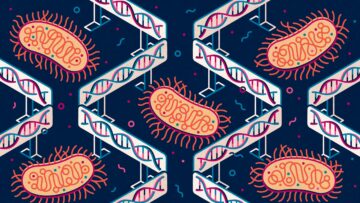 Every organism visible to the naked eye is a mass of genetically identical cells. Each of these multicellular creatures started as a single cell that divided countless times to produce its body. And while each cell contains the same genome, they express their DNA in a variety of ways, giving rise to specialized cells and tissues that perform different roles, such as skin, liver or immune cells. This complex multicellularity has evolved independently in at least five lineages: animals, land plants, brown algae, red algae and fungi.
Every organism visible to the naked eye is a mass of genetically identical cells. Each of these multicellular creatures started as a single cell that divided countless times to produce its body. And while each cell contains the same genome, they express their DNA in a variety of ways, giving rise to specialized cells and tissues that perform different roles, such as skin, liver or immune cells. This complex multicellularity has evolved independently in at least five lineages: animals, land plants, brown algae, red algae and fungi. In his latest book,
In his latest book,  When the water-logged, bloated corpse of the drowned Maddalena Antognetti, a sex worker who used the name “Lena,” was dredged from Rome’s Tiber river in the summer of 1604, she was still beautiful. We know this because her sometimes-lover Michelangelo Merisi, who hustled under the name Caravaggio, used Lena’s dead body as a model in a masterpiece entitled “Death of the Virgin.”
When the water-logged, bloated corpse of the drowned Maddalena Antognetti, a sex worker who used the name “Lena,” was dredged from Rome’s Tiber river in the summer of 1604, she was still beautiful. We know this because her sometimes-lover Michelangelo Merisi, who hustled under the name Caravaggio, used Lena’s dead body as a model in a masterpiece entitled “Death of the Virgin.”  Traditionally, love is seen as a profound and enduring connection. Yet, as Lacan and Deleuze describe, love is also a mad compulsion where we throw ourselves repeatedly against the wall between self and other. Insofar as love is necessary, Sinan Richards writes, it lies in identifying and seeking this madness in each other, and embracing imperfection. While writing
Traditionally, love is seen as a profound and enduring connection. Yet, as Lacan and Deleuze describe, love is also a mad compulsion where we throw ourselves repeatedly against the wall between self and other. Insofar as love is necessary, Sinan Richards writes, it lies in identifying and seeking this madness in each other, and embracing imperfection. While writing 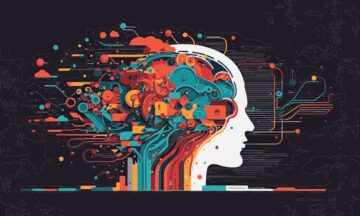 T
T